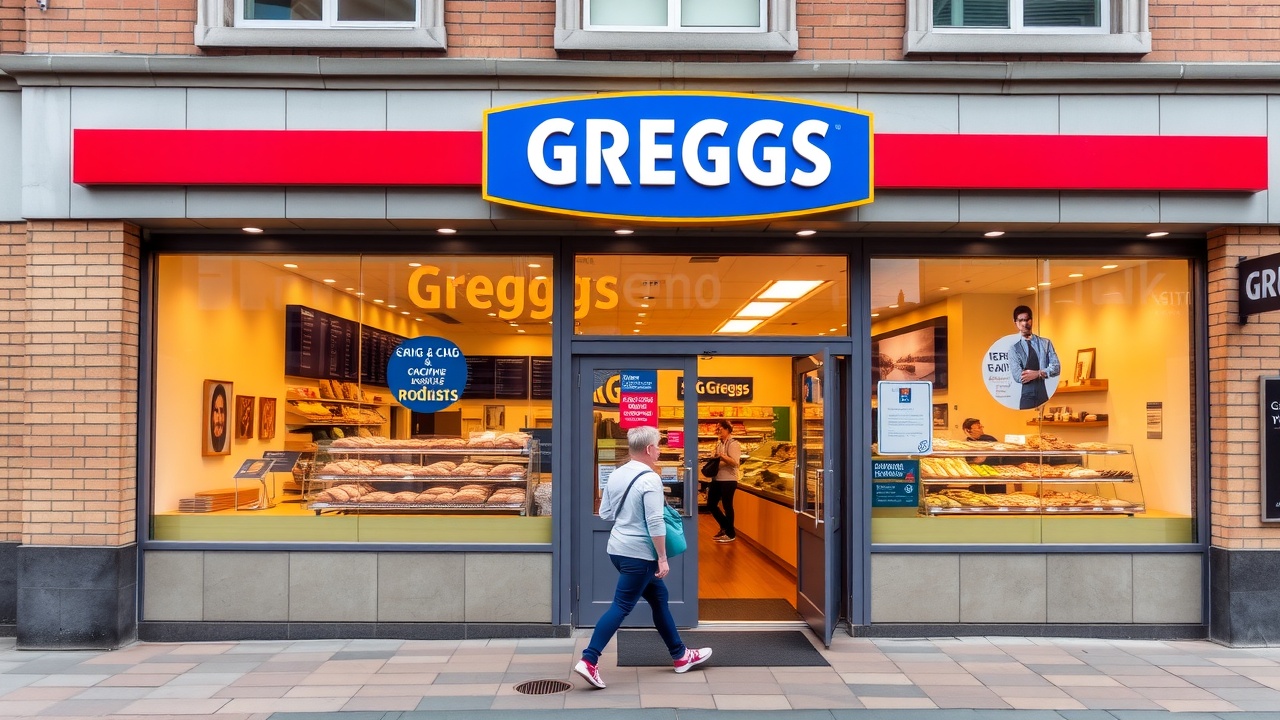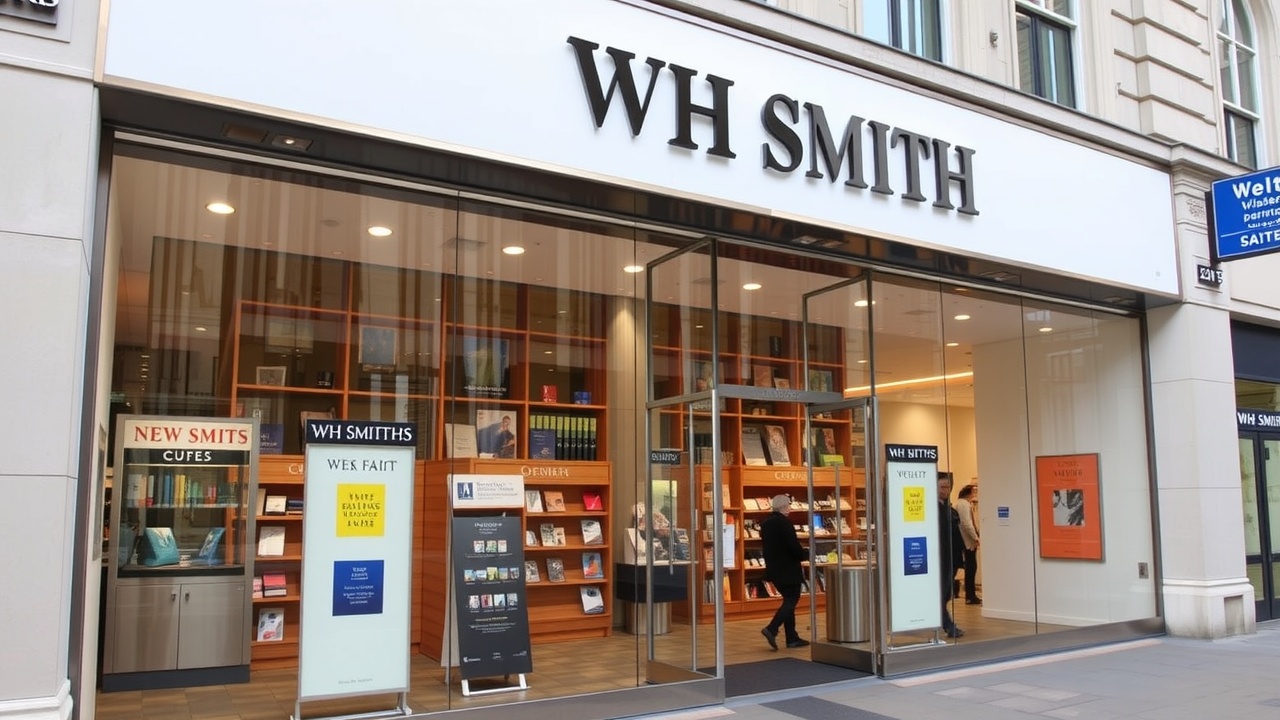
Greggs became a national treasure after being established as a store in Newcastle following the war
James Mackreides predicts that investors who are patient will continue to reap profits.
On the British high street, few names are as memorable as Greggs (LSE: GRG). Since its humble beginnings as a bakery in Newcastle and its current standing as a national institution, Greggs has established a solid reputation for providing dependable, reasonably priced food that has supported decades of consistent growth.
It is a unique achievement in a retail industry that is frequently characterized by instability. But in the last year, there has been a dramatic reversal: the share price has dropped by almost 50%, raising concerns about whether Greggs' winning streak has ended. The evidence does not support this.
An overview of Greggs's history as a retail success story.
The beginnings of Greggs can be traced back to 1939, when Tyneside businessman John Gregg began riding a bicycle around Newcastle to deliver bread and cakes. The modest endeavor, which was started during a period of austerity prior to World War II, laid the groundwork for long-term success. In 1951, following the war, Gregg set up shop in Gosforth. From being a neighborhood baker to becoming a household name, Greggs' journey began with this modest step. John passed away in 1964 at the age of 54, leaving his 25-year-old son Ian in charge and leading the company to new heights.
The turning point was when Greggs went public on the London Stock Exchange in 1984, which gave them the money they needed to continue growing. This was a calculated move based on its pragmatic ethos rather than a leap into the unknown. The result was a classic example of growth that was disciplined. Greggs concentrated on its core product: reasonably priced baked goods that were delivered quickly and in areas where foot traffic was guaranteed, while other retailers chased fads or overpriced their goods.
By the 1990s, it had established itself as a mainstay on UK high streets, with the sausage roll emerging as its signature item. It was easy to make, satisfying, and reasonably priced. Its growth paralleled the shifting retail scene in Britain, prospering as convenience culture gained traction and traditional grocers declined.
Greggs currently has more than 2,500 locations, surpassing rivals like McDonald's and Pret A Manger in the UK. From employees looking for a quick snack to students in need of comfort food, it has grown beyond its humble beginnings to become a cornerstone of the community. This dependability, which reflects a thorough comprehension of its clients' needs, has been essential to its successes. By providing not only food but also a feeling of comfort and worth that appeals to people of all ages and geographical locations, Greggs has successfully entered the British psyche.
Investors value consistency, and Greggs has excelled at providing it. Revenue has increased steadily over the last 20 years, from 457 million in 2003 to over 2 billion in 2024, representing a compound annual growth rate of about 7%. Despite not making for dramatic headlines, this shows a strong foundation. The 2008 financial crisis and more recent inflationary difficulties have not affected this stability. With margins normally ranging from 7 to 10 percent, operating profits have kept up, which is a respectable amount for a food retailer navigating supermarket competition and cost pressures.
The history of dividends supports this stability. The only brief pause in Greggs' payouts since the early 2000s was the Covid pandemic, when high-street traffic disappeared. It recovered quickly and started paying dividends again in 2021. When cash reserves permitted, it added special payments to the dividends, such as 40p per share in 2021 and 2023. Due to a business strategy that steers clear of risky endeavors, Greggs has proven to be a reliable performer for income-focused investors, frequently yielding above 3 percent and currently over 3 percent 5 percent. Where more ostentatious competitors have failed, this caution has kept it afloat.
Greggs's approach is simple yet successful.
Greggs has prospered by only offering affordable goods that are suited to its target market. Greggs remained firm while rivals experimented with high-end products. The end result was more than 1,000 percent in total shareholder returns over the previous 20 years. The growth of Greggs has been purposeful rather than spectacular. Refinement of operations, expansion of its store network, and adjustment to changing consumer preferences are its three main pillars. The number of outlets has increased gradually, from 260 when it first listed on the stock exchange in 1984 to 1,000 in 1999, 1,500 in 2010, and 2,000 in 2019. Every new location has been thoughtfully positioned in busy locations like stations, shopping malls, and town centers. The tactic is simple yet successful.
Greggs has strengthened its operational infrastructure. It has developed over decades to produce millions of items every week with precision thanks to centralized bakeries and effective logistics. A new frozen logistics hub in Derby and other significant investments in 2023 increased capacity to accommodate 500 more stores, demonstrating a dedication to future expansion. As the chain expands, this is a long-term strategy to guarantee supply and demand are balanced.
The evolution of the product has been subtle but successful. Sales soared in 2019 when the vegan sausage roll was introduced, capitalizing on the growing desire for plant-based options without offending its traditional clientele. Pizza increased its appeal. Coffee has also emerged as a strength due to its low prices and ability to compete with chains like Costa. Despite economic challenges, like-for-like sales increased 13 percent in 2023 and 5 percent in 2024 as a result of these adjustments, demonstrating Greggs' ability to adapt without losing its identity.
Greggs management has demonstrated its ability to lead effectively, which is necessary for success on this scale. As CEO from 2013 to 2022, Roger Whiteside was a significant and effective steward of the business, pushing innovations like the vegan line and expediting store openings while keeping costs under control. Roisin Currie, who joined the company in 2010 as chief people officer after 20 years at Asda, succeeded him in 2022. The financial results clearly demonstrate the leadership team's practical approach. Effective use of resources is demonstrated by the return on capital employed (ROCE), which has averaged 15% to 20% over the last ten years. There is very little debt; at the end of 2024, net cash was 125 million, and cash flow easily covers capital expenditures and dividends. This management prioritizes execution over showmanship.
A selection of Greggs' food offerings.
Why, then, are the shares lingering?
Given this impressive track record, the nearly 50% decline in Greggs' share price over the last 12 monthsfrom almost 3,200p in March 2024 to just over halfdeserves attention. The combination of outside forces and market sentiment is what is causing the decline rather than internal shortcomings. As a result of the worsening cost-of-living crisis, inflation peaked at 11% in late 2022 and continued to hover around 3% to 4% in 2025. Static wages have reduced spending and reduced foot traffic for Greggs' core working-class customer base. Investors used to greater momentum were unnerved when like-for-like sales growth slowed to 5% in the first half of 2024 after double-digit gains in 2023.
The problem has been made worse by rising expenses. Energy, labor, and wheat prices have all sharply increased. Greggs has slightly increased prices, but is hesitant to go any higher. In recent years, margins have decreased, and while there are indications of improvement, worries about the effects of costs, especially on wages, still exist. There have also been broader market dynamics at play. Consumer stocks have declined in value as a result of interest rates remaining at 4.5 percent and ongoing recessionary fears. Although the FTSE 250 has dropped 10% in the last year, Greggs' decline has been more severe due to a premium valuation that was more than 25 times earnings at its peak, as opposed to a historical range of 15-20.
The management doesn't panic. Greggs has acknowledged the challenges, but it is still moving forward with its expansion, aiming for about 100 net new openings in 2025 and a net increase of 145 stores in 2024, bringing the total to 2,554. Strong growth has also been observed in digital channels, with app-based sales increasing by 20%. The majority of revenue now comes from the evening trade, especially pizza offerings, which have been the biggest driver of recent sales increases.
Continuous investments in cost-cutting measures intended to counteract inflationary pressures also prioritize operational excellence. Automation and supply-chain efficiency improvements are two of these initiatives. Yet, a market that is frequently preoccupied with short-term gains has become uneasy due to this emphasis on long-term stability. Short-term margin pressure and a decrease in return on capital are anticipated as a result of efficiency improvements and new store investments. Despite this, Greggs' track record of meeting its strategic goals over the years raises the possibility that the share price's current decline does not accurately reflect the company's underlying strength and health.
Reasons for patient investors to purchase now.
Greggs has consistently shown that it can identify new growth prospects over the years. Shareholders have benefited from this, as management's careful capital allocation has produced continuously high returns on investment. The foundational elements of Greggs are still strong. Profits have remained strong, sales are still increasing, and the balance sheet is in good condition thanks to a strong net cash position. Short-term difficulties rather than any structural problems with the business model seem to be the cause of the recent share price weakness. The stock is currently trading at a multiple below both its ten-year average and a large portion of its peer group, making it appear inexpensive. The attractiveness is increased by the 36% yield, which is supported by robust cash reserves.
The economy should improve in the future. Although interest rates might stay high in the near future, inflation is decreasing, and by the end of 2025, they should start to decline. Greggs' value-focused product line usually does especially well during lean times, so it's in a good position to take advantage of any remaining consumer caution. Growth should be sustained in the interim by continuing store expansion as well as expanding digital and delivery channels. As cost pressures lessen, profitability may also increase if the economic environment improves. Naturally, there are still risks. The recovery may be hampered by a more severe than anticipated decline or a fresh increase in input costs. Greggs has, however, survived difficult times in the past, such as the 2008 global financial crisis and, more recently, the 2020 COVID lockdowns. Each time, the business came out stronger because it had proven to be both operationally resilient and flexible.
The present share-price decline presents a tempting opportunity for patient investors to get into a well-performing company. With a strong foundation, room to grow, and a competitive price, Greggs' high street success story is far from over. Its capacity to strike a balance between innovation and tradition, as well as its unwavering emphasis on value, guarantees that it will continue to be a powerful force that may reward those who are prepared to see past the current darkness.














Leave a comment on: Greggs' tried-and-true formula for success on the high street